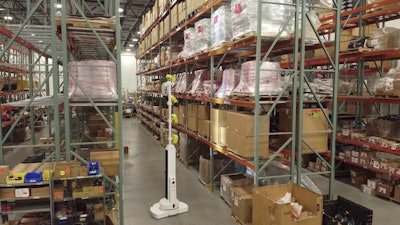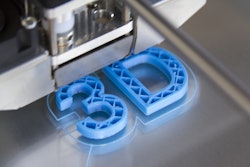
Businesses across warehousing and retail are facing a reality that’s tough to ignore: demand is climbing, but the workforce needed to meet that demand is steadily declining. Shrinking delivery windows, rising customer expectations, and a dramatic shift in how and when goods are purchased have put more pressure than ever on the teams keeping operations running. Yet those very teams aren’t growing, and in a lot of cases, are instead getting smaller.
As of December 2023, staffing levels in warehouse and logistics sectors have been in a decline since 2022, showing a multi-year trend that suggests the labor market isn’t going to bounce back in the way some hope. Hiring is harder. Retention is tougher. And the physical nature of warehouse and retail jobs is only compounding the problem.
At the same time, injury rates are climbing. By the end of 2023, the sector reported a 75% increase in injuries, fueled by long shifts, repetitive movements, and the strain of physical work. These statistics reflect the day-to-day realities of the people on the ground. With fewer hands to carry the load, every task feels heavier.
So, how are companies coping? Increasingly, they’re turning to automation. Not to replace employees, but to help leaner teams stay efficient and safe. In environments where time, safety, and labor are under pressure, automation is shifting from a nice-to-have to a business imperative.
Time sinks and missed opportunities: The cycle counting challenge
Inventory accuracy remains critical, but achieving it is another story. Traditional cycle counts are a notorious drag on resources. In large-format retail environments, conducting a full inventory audit can demand upwards of 30 employees, spending hours methodically scanning and verifying product across shelves. Warehouses face similar hurdles, often needing to pause core operations for multi-day audits. This disruption leads to infrequent counts and data gaps that affect replenishment planning, customer service, and profitability.
By automating time-consuming tasks like inventory scanning with technologies like autonomous mobile robots equipped with computer vision, RFID and barcode scanners, businesses can collect inventory data more regularly and without sidelining staff. This not only increases visibility but also helps prevent stockouts and overordering—two common consequences of inaccurate or outdated data. The result? Teams gain confidence in their inventory and are free to focus on operations that add greater strategic value.
Getting more done without pushing teams to the brink
Leaner teams are now the norm, but the expectations placed on them haven’t eased. Automation offers a way to stretch capacity without stretching people too thin. By offloading repetitive or time-intensive tasks—like transporting goods, capturing inventory data, or cleaning floors—facilities can unlock higher output without overburdening their workforce.
Robotic order transport systems, for instance, have helped reduce picking time by up to 30%. In some facilities, integrating automation into workflows has led to productivity gains as high as 50%. It’s about efficiency and focus. With automation handling routine duties, workers can zero in on responsibilities that require oversight, judgment, and customer interaction.
In retail, this might mean redirecting staff from backroom logistics to engaging with customers and merchandising. In warehousing, it enables teams to spend more time on exception management, optimization, and strategic planning. The goal isn’t to do more with less, it’s to do more of what matters, with the resources available.
A real-world example: The shift to smart cleaning
Take for instance a global distribution solutions company. Because it faces ongoing labor constraints and high expectations for cleanliness, the company deployed robotic floor scrubbers to handle routine cleaning tasks. This shift enabled teams to redirect focus toward higher-value responsibilities, while ensuring consistently high sanitation standards across multiple facilities.
The results were twofold: facility operations became more reliable and efficient, and the automation investment reinforced the company’s commitment to both employee wellbeing and operational excellence. It wasn’t about adopting technology for its own sake—it was a purposeful move aligned with business priorities.
Automation supports safer, more sustainable staffing
Safety is an urgent concern in both warehouses and retail settings. The warehousing industry alone averaged 4.5 injuries per 100 workers last year. While that number might seem small on paper, the cumulative scale and its ripple effects—lost productivity, increased turnover, and decreased morale—are significant.
Reducing the physical demands of work through automation is one of the most effective ways to cut injury rates. It also supports better employee retention, which is a growing priority as the labor pool continues to contract. In one survey, nearly 90% of full-time employees reported that automation improved their job satisfaction. Why? They experienced less physical stress, felt more in control of their responsibilities, and had the time and space to contribute in more meaningful ways.
The benefits are critical to business continuity. In an environment where finding and keeping qualified talent is a challenge, anything that contributes to retention and engagement is worth serious consideration.
A long-term solution—not a quick fix
It’s tempting to think of automation as a short-term solution to immediate problems. But for many operations, it’s becoming a cornerstone of their long-term strategy and technology infrastructure. Leaders in logistics and retail are rethinking the nature of work itself, what tasks must be performed by people, and which can be automated to make those people more effective?
Automation doesn't diminish the workforce, it enhances it. It creates safer, more stable environments where employees can thrive. It gives businesses the agility to adapt to demand fluctuations, supply chain challenges, and changing customer expectations. And it offers a path forward that doesn’t rely on unsustainable staffing levels or burnout-inducing workloads.
Looking ahead
The labor shortage isn’t going away. But by embracing automation as a key part of how work gets done, businesses can meet today’s challenges head-on, and build more resilient, future-ready operations. The winners won’t be those who try to push their teams harder. They’ll be the ones who empower them to work smarter.




















